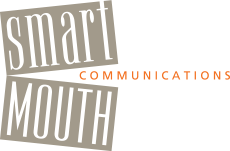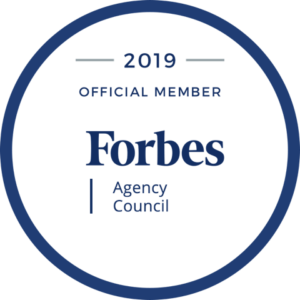SmartMouth Talks!
Always a Student
Communications Lessons from Otis
Brevity. Otis responds best to one-word commands. Too many words, and it’s all a jumble, and then he’s unsure of what’s expected. And nothing happens. Hmmmm, sound familiar? Clarity and understanding often come from brevity.
Consistency. Consistency of message, voice and tone are vital in leading, managing … or in the role of master. Just with our being consistent in word, voice and tone, Otis already knows the drill around the house. Consistency is efficient and ultimately reassuring to an audience that knows you.
Positivity. Wow, the power of positive feedback! Dogs aren’t the only ones who like to be told they’re good. It’s universal. You get what you give, and positivity feeds everyone. Let’s face it, nothing is more motivating than a good stroking! It feels good to give it, and feels good to receive it.
Me and Al Sharpton on the Same Page?
“A speaker has to determine what he is trying to do and what is the setting. You give speeches for different reasons, and you’ve gotta know going in: Am I there to inform and inspire or am I going in there to entertain and impress? Then lock down two or three outlined points to inform them or razzle-dazzle them.”
Lessons Learned
Wow, I learned a lot. At last week’s concluding session of SmartTalk – a year-long seminar for professionals who came together monthly to practice and polish their presentation skills – participants were asked, on the spot, to stand up and give a 3-minute talk on something they had learned in SmartTalk. They gave great talks, and it might well be that I learned more from them than they did from me!
So here are my takeaways from their “teachbacks” …
1. Flipping the switch in your brain to think about your audience – their needs, biases, expectations – may be all you need to do in some cases in order to communicate effectively. The tendency is to think about ourselves – our own needs, biases, expectations – when addressing an audience. But when you’re communicating, it’s simply not all about you, it’s all about them. All the fancy preparation in the world may never beat just empathizing with your audience. Thanks for sharing the stories that illustrated this, SmartTalkers!
2. The disclaimers, explanations, apologies, and self-deprecation that precede many people’s communications – formally at a podium, or when speaking up in a meeting – do nothing but make an audience uncomfortable. Communicating is all about them, your audience, and they expect speakers to be competent, together, successful. So don’t put them on edge by trying to lower the bar for yourself and telling them you’re not 100% prepared or that you’re not very good at this. Instead, make everyone, including yourself, feel good about your presentation. SmartTalkers were compelled to approach the podium saying, “I love doing this!” It made such a difference in their performances. No more sandbagging!
3. Packaging and prioritizing are huge. We all have lots of information to share in meetings and presentations, but unless we package it inside a message – a point that conveys the value, significance, meaning, or context for the info – it can so easily get lost. SmartTalkers definitely learned, and demonstrated, that they know how to pare down information and share it selectively, so that what they say is understood and remembered by their audiences. Yes, there is such a thing as TMI!
Thank you, thank you to all SmartTalk participants, you were awesome! Isn’t it amazing how long 3 minutes can be and how short 9 months can be? Lessons learned indeed.
Making Connections
Schmoozing today with my electrician and painter, and for way longer than I should have, I started to think about how people connect – even, and especially, people who don’t know one another. From that, I extrapolated a few common themes that are good to keep in mind when you need to connect with an audience you don’t know at all or very well.
- Ask questions, be curious.
- Show interest in what you know about the other person’s work or mission.
- Tell relevant stories.
- Get personal, reveal just a little bit that makes you human and real.
- Treat everyone as if they’re the most important person or group you’ve talked to all day.
Do You Deliver?
Do you deliver when you speak? Do you engage and connect physically as well as intellectually? It’s not enough just to prepare some remarks or show some slides. You’ve got to literally show up and deliver … with your whole body!
Have a Big One? Help is on its Way …
Introducing SmartMouth Communications “Need a Consult?” button.
If you need a second pair of eyes on a speech or presentation; if you need someone to write or rewrite your opening or closing; if you need input or feedback on your slides; or if you simply need to talk through your ideas with a trusted consultant, give us a shout!
Work, Work, Work
It All Comes Down To …
Self-discipline.
Even just a little bit of self-discipline can make a big difference in a meeting or presentation. Here’s a 5-point checklist for you to consider while keeping yourself in check:
- You can’t cover everything, so don’t try. Be selective and prioritize.
- No one is as interested in what you have to say as you are … unless, of course, it pertains directly to them! It’s all about them.
- Observing the boundary of a time allotment shows respect, restraint, and command. Going over a time allotment shows the opposite.
- Winging it is not cool. Winging it is simply the intersection of avoidance and false hopes. You’re better than that, so prepare.
- And above all, take a second to identify what it is that you want your audience to think or know or do at the end. If you’re not solid with the takeaway, how can you expect them to be?
Child’s Play



